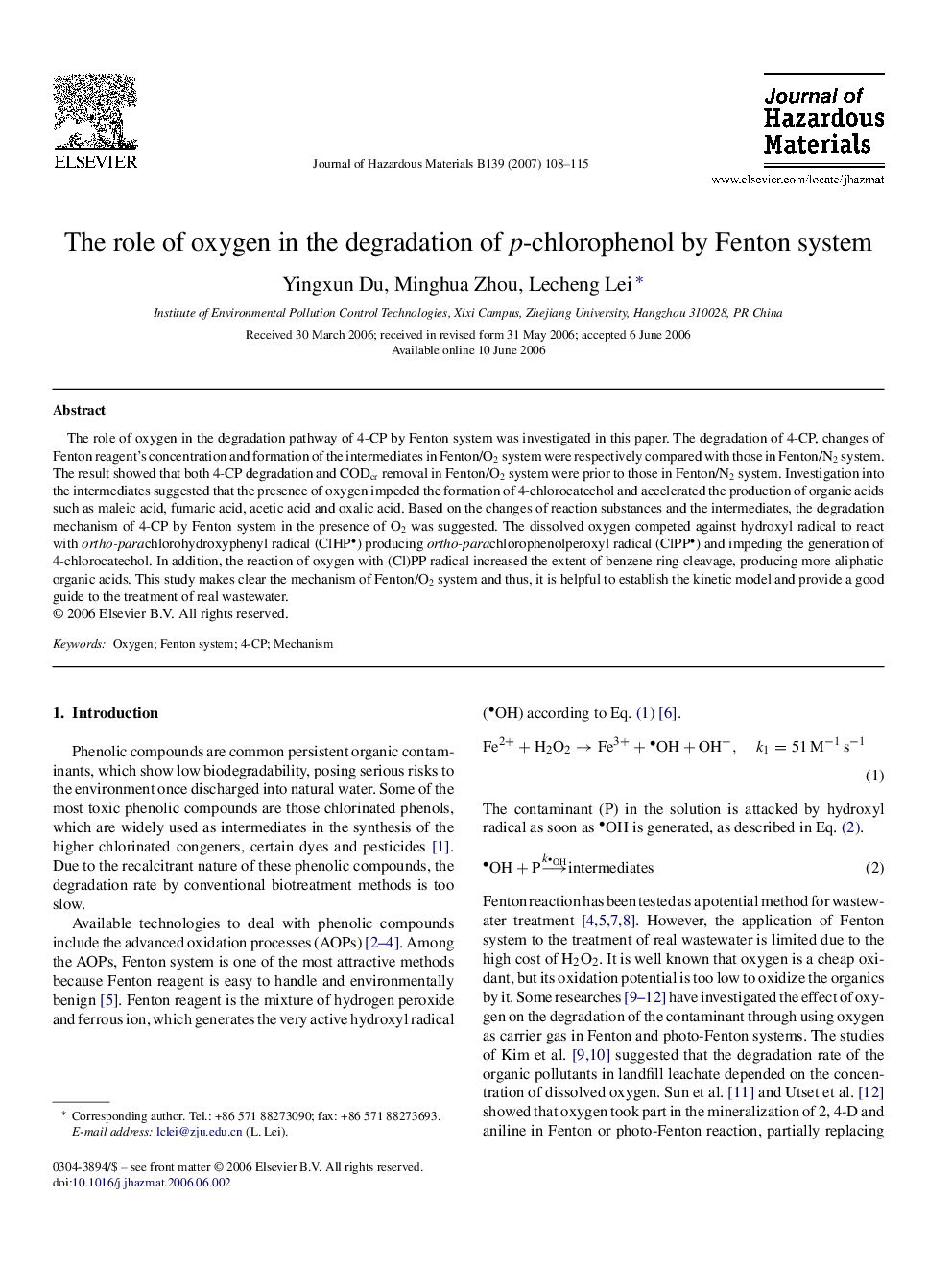| Article ID | Journal | Published Year | Pages | File Type |
|---|---|---|---|---|
| 584937 | Journal of Hazardous Materials | 2007 | 8 Pages |
Abstract
The role of oxygen in the degradation pathway of 4-CP by Fenton system was investigated in this paper. The degradation of 4-CP, changes of Fenton reagent's concentration and formation of the intermediates in Fenton/O2 system were respectively compared with those in Fenton/N2 system. The result showed that both 4-CP degradation and CODcr removal in Fenton/O2 system were prior to those in Fenton/N2 system. Investigation into the intermediates suggested that the presence of oxygen impeded the formation of 4-chlorocatechol and accelerated the production of organic acids such as maleic acid, fumaric acid, acetic acid and oxalic acid. Based on the changes of reaction substances and the intermediates, the degradation mechanism of 4-CP by Fenton system in the presence of O2 was suggested. The dissolved oxygen competed against hydroxyl radical to react with ortho-parachlorohydroxyphenyl radical (ClHP) producing ortho-parachlorophenolperoxyl radical (ClPP) and impeding the generation of 4-chlorocatechol. In addition, the reaction of oxygen with (Cl)PP radical increased the extent of benzene ring cleavage, producing more aliphatic organic acids. This study makes clear the mechanism of Fenton/O2 system and thus, it is helpful to establish the kinetic model and provide a good guide to the treatment of real wastewater.
Keywords
Related Topics
Physical Sciences and Engineering
Chemical Engineering
Chemical Health and Safety
Authors
Yingxun Du, Minghua Zhou, Lecheng Lei,
